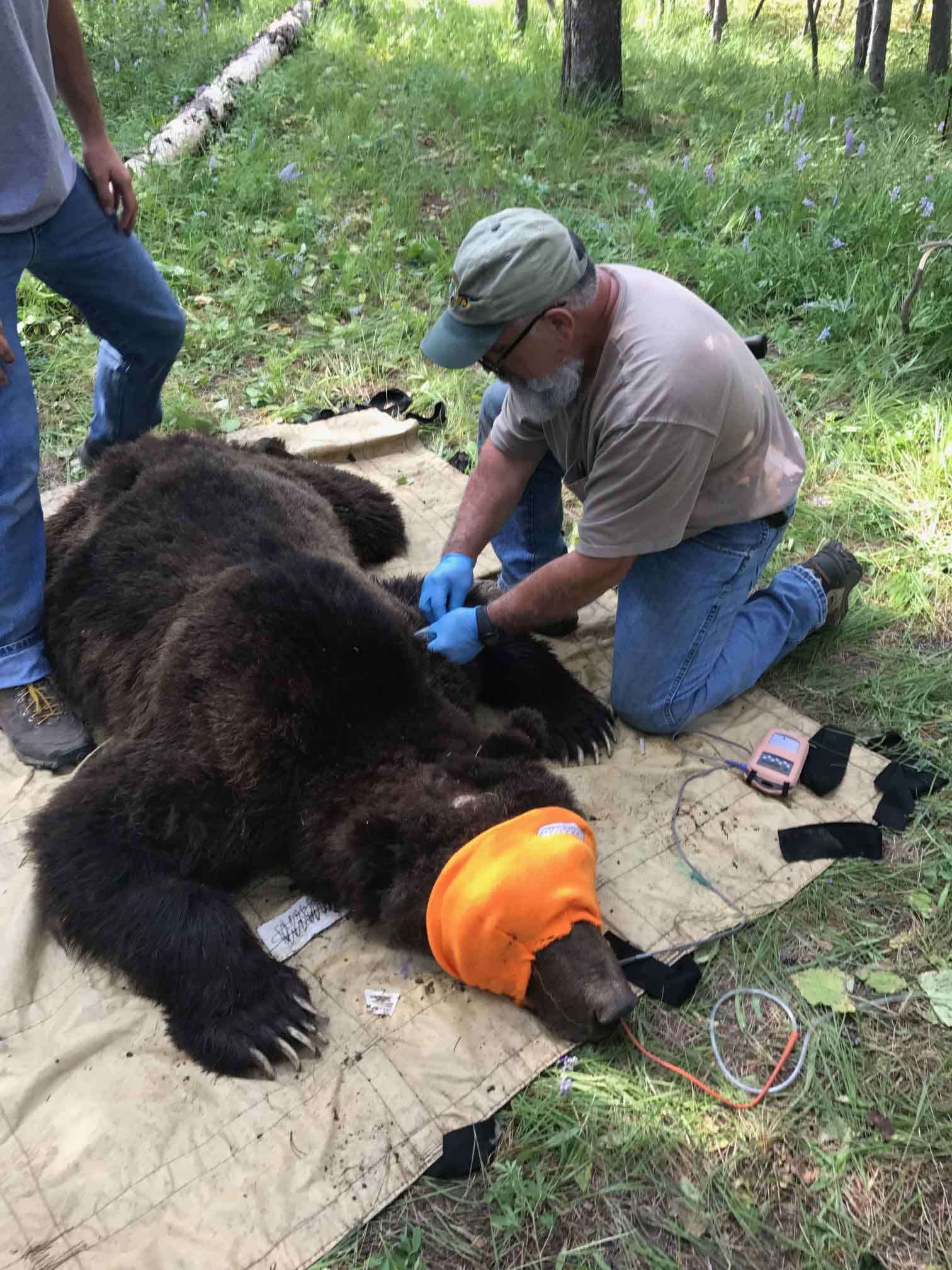
Grizzly Bear Study Trapping Completed in Upper Snake Region
ISLAND PARK – Each summer as part of the joint scientific efforts of the Interagency Grizzly Bear Study Team (IGBST), biologists from the Idaho Department of Fish & Game (IDFG) set traps to catch grizzly bears. Once caught the bears are given a battery of tests, marked, and radio collared before being released. The data from this research has been the foundation for the science behind the recent delisting of the Yellowstone Ecosystem grizzly bear population. Even though only natural baits are used to lure bears to the traps, also trapping officially ceased at the end of August, as the archers began heading out into the Island Park Area to pursue elk.
According to Jeremy Nicholson, Large Carnivore Biologist for IDFG, “ By tracking radio-collared bears, we gain a better understanding of grizzly bear distribution, survival, causes of mortality, reproduction, litter size, and timing of den entry and emergence.” This year, Nicholson’s crew captured 10 grizzly bears. Seven of those bears received a radio collar, which included 3 males and 4 females. According to Nicholson, “The females we captured were bears that have never been captured before. Two of the females had cubs of the year, one with 3 and the other 2. We were really excited to capture that many females!” Females are important because they are the reproductive engine that drives the population, and tracking their trends generally, gives an accurate representation of the entire population.
Because all of the Upper Snake Region is home to black bears and increasingly more grizzlies are being seen in places where they have been absent for decades, it is important that anyone who spends time out in the woods is prepared for a bear encounter. Know what species of bear you are dealing with is an important first step so that you know how to react. Carrying bear spray and knowing how to deploy it is also strongly suggested. “Inert training canisters are available for purchase from stores and at the least people should spend time getting to know how the safety functions,” says Gregg Losinski of IDFG who also serves as chair of the Information & Education Subcommittee for the Interagency Grizzly Bear Committee (IGBC). “There unfortunately have been a number of cases where people weren’t able to use their bear spray as effectively because they couldn’t operate the safety under the high-stress conditions of a grizzly encounter.”
To learn more about grizzly bears and associated management and safety topics visit igbconline.org
##
